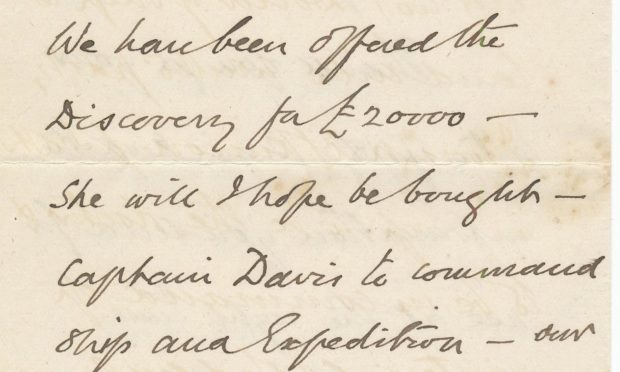I mentioned recently how Captain Scott remains in ‘pole’ position in saleroom expectations. Yet, letters from a local collection suggest Scott’s career was not entirely plain sailing.
The letters relate to the British Arctic Expedition of 1876, in which two ships – the Dundee-built whaler Bloodhound, renamed Discovery for the 1876 expedition, and the sister Stephen’s-built Alert, sailed closer to the North Pole than any other vessel, while their sledging parties reached further north than any human had ever stood.
Several letters discuss that expedition and talk excitedly of planting the British flag at the Pole.
The expedition officers duly returned to naval duties and rose through the ranks. Several became admirals including Sir George Nares, Sir Arthur Markham, Sir Lewis Beaumont, George Egerton and William May. The letters show these explorers writing to each other, recalling their adventures in 1876, as well as commenting on important naval matters.
The possibility of Scott’s court martial is discussed – which would have scuttled his career – but it is eventually smoothed over.
Two letters discuss Captain’s Scott’s mishap in 1907 when, under his command, HMS Albemarle collided with the battleship HMS Commonwealth. The possibility of Scott’s court martial is discussed – which would have scuttled his career – but it is eventually smoothed over. The admirals agree to tell Scott, but asked him to keep the investigation outcome hush-hush. A secret until now.
Another letter from 1907, shown here, discusses the possibility of purchasing Scott’s Antarctic expedition ship, RRS Discovery, for £20,000 for a relief expedition to look for Ernest Shackleton.
Arctic letters are rare. The difficulty of getting mail to early expeditions meant it to be carried by other expedition ships or whalers and was often left at remote cairns in Greenland in the hope that a sledging party could reach it.










